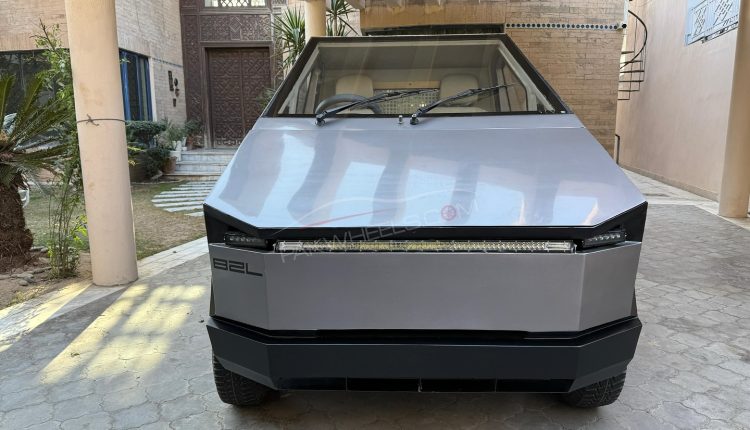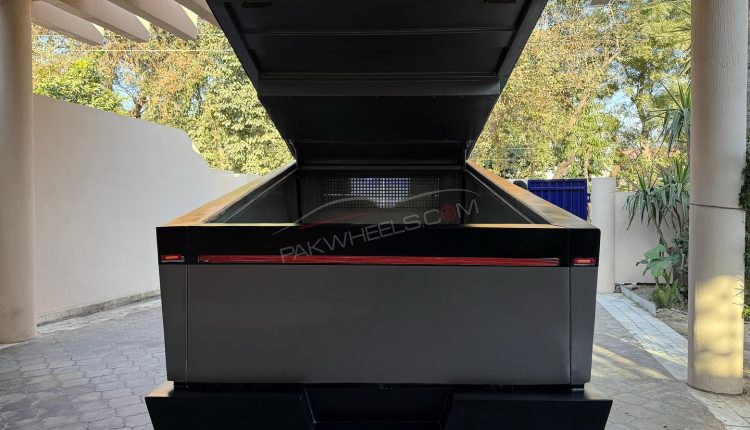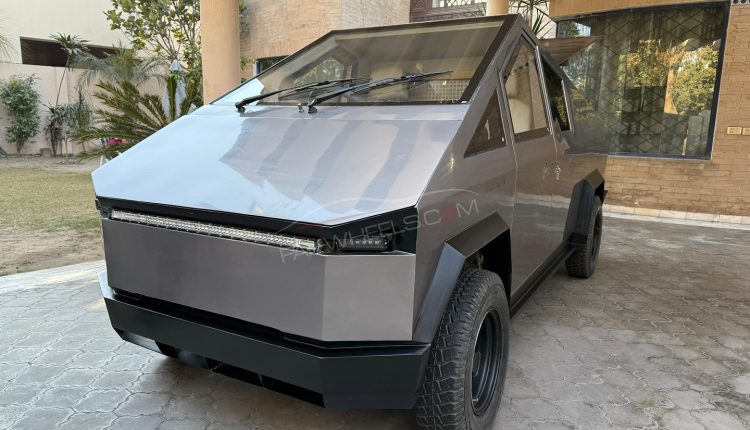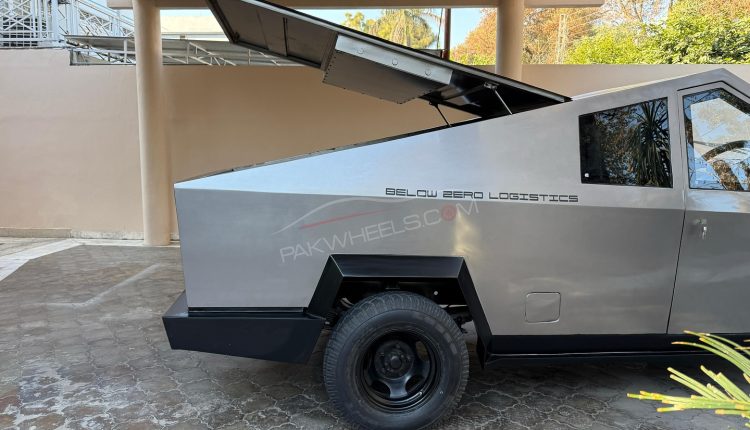‘Made in Pakistan’ 1,000cc Cybertruck – A Review
Today, we bring you a truly unique story in our user review series. It’s not just about a car—it’s about passion, effort, and innovation. This time, we’re reviewing Pakistan Cybertruck a remarkable project named “The Elephant” due to its massive size and gray color. The creator, a determined businessman with no engineering background, turned his bold idea into reality. Let’s dive into this fascinating story!
The Idea
The journey began with a desire to stand out. The creator wanted something beyond a regular cash transit vehicle—a bold statement that could grab attention. After extensive online research, he came across a picture of Tesla’s Cybertruck and thought, “Why not build something like this in Pakistan?”
With an unused Forland vehicle lying around, the idea transformed into a full-fledged project. Despite limited resources, he decided to take on this challenging venture with the help of local craftsmen in Gujranwala.
The Cyber Truck Build Process
The Cybertruck-inspired design took 5–6 months to complete. Here’s how it unfolded:
- Chassis & Base Vehicle: The Forland served as the base, with its 1000cc petrol engine still intact.
- Body Construction: Local craftsmen in Gujranwala built the body from scratch. The design emphasized simplicity, with straight edges and flat surfaces, making local fabrication techniques feasible.
- Weight Challenges: Due to the use of heavy-gauge steel, the truck turned out exceptionally sturdy, though slightly heavier than planned.
- Interior Modifications: The original two-seater cabin was kept intact, with minor cosmetic improvements.
The vehicle wasn’t just a fun project; it was built to function as a daily driver. However, its unconventional design has made it an instant head-turner on the roads. People have stopped the owner multiple times for selfies and to ask about the vehicle.
Performance Highlights
Despite its unconventional design, the truck performs surprisingly well:
- Engine: The 1000cc petrol engine still powers the vehicle efficiently, delivering decent mileage even with the added weight.
- Stability & Drive: The vehicle maintains stability even at 120 km/h. However, the steering position and visibility still need refinement.
- Brakes: The brakes were upgraded to handle the additional weight, ensuring safe operation.
Images of Pakistan Cybertruck
Cost Breakdown
Building this masterpiece wasn’t cheap, but still cost significantly less than an imported vehicle:
- Base Vehicle: PKR 1.5 million (Forland truck).
- Customization: Approximately PKR 1.2 million for fabrication and modifications.
- Total Cost: with some additional costs, it stands at around PKR 3 million.
Challenges & Lessons Learned
The project wasn’t without its hurdles:
- Weight Issues: The steel body added unnecessary weight, affecting efficiency.
- Lack of Crumple Zones: Safety features like crumple zones were overlooked, which could be a concern during an accident.
- Improvisation: Due to a lack of technical expertise, many decisions were based on trial and error.
Final Thoughts
This Pakistani Cybertruck isn’t just a vehicle; it’s a testament to creativity and determination. It shows that with passion, even the most ambitious ideas can come to life. While its engineering may not match Tesla’s Cybertruck, it’s a bold step toward innovation in Pakistan’s automotive landscape.
What’s Your Take?
What do you think about this unique project? If you have any inspiring stories like this, share them in the comments. We will cover them and share them with the world, highlighting how and why Pakistani people are such hard workers. They need a proper, functional system!
Also, remember to subscribe to our blog for more inspiring stories like this. Stay tuned for our upcoming user review, and in the meantime, take care and drive safely!








